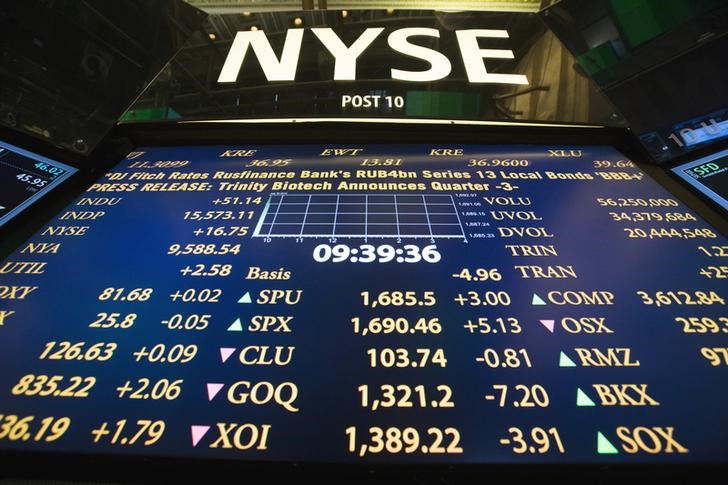By Geoffrey Smith
Investing.com -- Prices for base metals touch 10-year highs as reflation bets weaken the dollar and long-dated bonds. Stocks are set to open lower as analysts rejig their models to factor in higher capital costs. Boeing grounds some of its 777s and oil’s rally continues. Here’s what you need to know in financial markets on Monday, February 22nd.
1. Heavy metals
The inflation trade, or reflation trade if you prefer, roared back into life with base metal prices hitting multiyear highs on expectations of a synchronous, global recovery.
Copper futures in London broke $9,000 a ton for the first time since 2011, surging as high as $9,233 before retracing but still holding above the $9k level. Futures for iron ore, the key ingredient in steelmaking, rose to their highest in three weeks in Singapore and are now less than 5% off the 10-year high they hit in January. zinc futures hit a two-year high, while aluminum futures notched their highest since 2018.
The trades in metals are the flip side of selling in the dollar and in longer-dated Treasuries. That trend was reinforced by prospects of the $1.9 trillion U.S. stimulus package moving to a vote in the House of Representatives this week.
2. Powell's warm-up acts
It’s a quiet start to the week as far as the data calendar is concerned, with only surveys from the Chicago and Dallas Federal Reserve banks due out.
In addition, Fed Governor Michelle Bowman will speak at 3:30 PM ET (2030 GMT), taking the job of warm-up act for Chairman Jerome Powell, whose two days of testimony in Congress on Tuesday and Wednesday will be one of the biggest events of the week.
Overnight, survey in Turkey and Germany showed rising levels of business confidence. The closely-watched German Ifo survey exceeded forecasts both as regards current conditions and business expectations, due largely to strength in manufacturing.
3. Stocks set to open lower
U.S. stock markets are set to open lower later, as the prospect of rising bond yields feeds through into higher expected costs of capital for companies, something that depressed returns on equity.
By 6:30 AM ET (1130 GMT), Dow Jones futures were down 183 points, or 0.6%, while S&P 500 futures were down 0.8% and tech-heavy NASDAQ futures were down 1.2%.
Stocks likely to be in focus later include Berkshire Hathaway (NYSE:BRKa) and Dish Networks (NASDAQ:DISH), both of which report earnings before the opening. The oil and gas sector dominates the late reports, with Williams (NYSE:WMB), Occidental (NYSE:OXY) and Diamondback (NASDAQ:FANG) all presenting.
4. Boeing grounds some 777s after engine failure
Another stock likely to be in focus later is Boeing (NYSE:BA), which has asked airlines to ground any 777 aircraft using a particular model of Pratt & Whitney engine. One of the engines on a United Airlines flight out of Denver exploded at the weekend, showing debris over the neighborhood. There were no fatalities.
It’s the latest embarrassment for the company, which has only just received permission from regulators to start flying its 737 MAX aircraft after two years on the ground in the wake of fatal accidents.
Boeing stock was down 3.7% in premarket trading, while Raytheon (NYSE:RTN), the owner of Pratt & Whitney, was down 2.9%.
5. Oil resumes rally
Crude oil prices started the week higher, amid signs of the Texas energy complex starting to return to normal after last week’s cold snap that took production wells, pipelines and refineries all offline.
By 6:30 AM ET U.S. crude futures were up 0.8% at $59.72 a barrel, while Brent crude was up 0.8% at $62.62 a barrel.
CFTC data released on Friday had shown that last week’s price surge had happened without any major support from speculative players, something that would suggest it will be harder to unwind.
Overnight, Bloomberg reported that an argument is brewing between Saudi Arabia and Russia at their next meeting to review oil output levels, with the Russians more eager than their Gulf partners to increase output levels. The Wall Street Journal had reported last week that Saudi Arabia wants to reverse the unilateral cut of 1 million barrels a day that it made for February and March.
